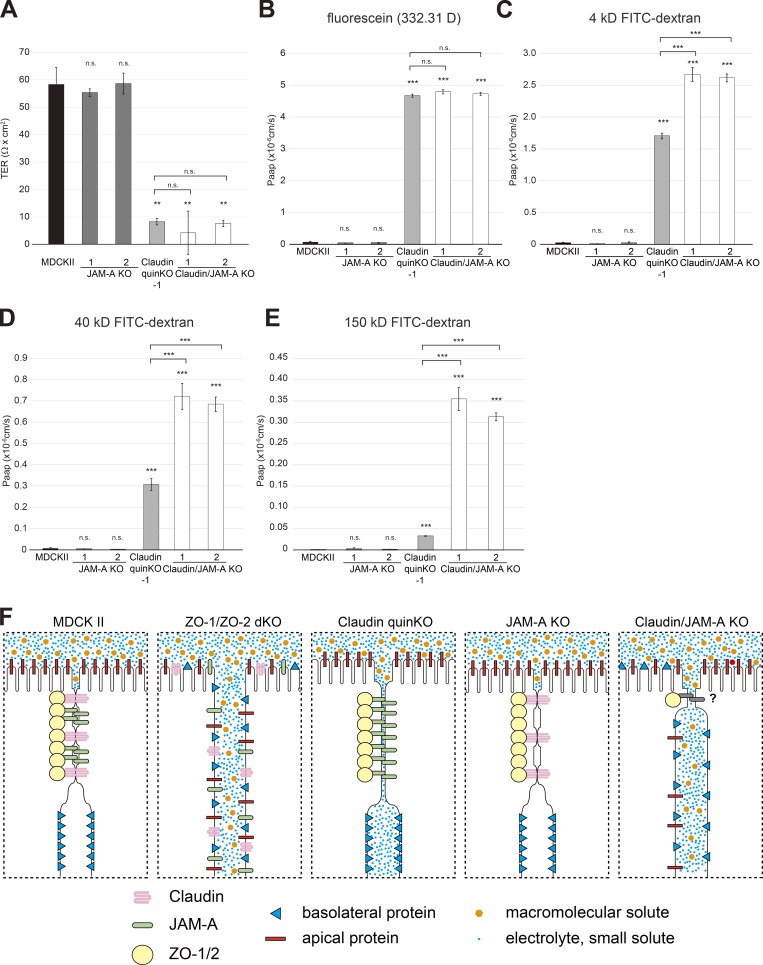Figure 11.
JAM-A is required for the claudin-independent macromolecule permeability barrier formation. (A) TER measurements. Unit area resistance was markedly reduced in claudin quinKO and claudin/JAM-A KO cells. (B–E) Paracellular flux measurements. (B) Apical-to-basal permeability of fluorescein (332.31 D) was dramatically increased in claudin quinKO and claudin/JAM-A KO cells. (C) Apical-to-basal permeability of 4-kD FITC-dextran was markedly increased in claudin/JAM-A KO cells, and significantly increased in claudin quinKO cells. (D) Apical-to-basal permeability of 40-kD FITC-dextran was dramatically increased in claudin/JAM-A KO cells, but only moderately increased in claudin quinKO cells. (E) Apical-to-basal permeability of 150-kD FITC-dextran was dramatically increased in claudin/JAM-A KO cells, but only modestly in claudin quinKO cells. (F) Summary of the phenotypes of MDCK II, ZO-1/ZO-2 dKO, claudin quinKO, JAM-A KO, and claudin/JAM-A KO cells. In MDCK II cells, claudins and JAM-A are concentrated at the TJs with ZO-1/ZO-2. Membranes closely appose to each other and kissing points are formed, and paracellular diffusion of electrolytes and macromolecules are prohibited. Epithelial polarity is maintained. In ZO-1/ZO-2 dKO cells, claudins and JAM-A are diffusely localized, and membrane appositions and kissing points are lost. Intercellular space is widened, and electrolytes and macromolecules diffuse across the paracellular space. Epithelial polarity is disorganized. In claudin quinKO cells, JAM-A and ZO-1/2 are concentrated at the apical junctions, and membrane appositions are formed despite the lack of kissing points. Although electrolytes can diffuse across the paracellular space, the paracellular diffusion of macromolecules is prohibited. No epithelial polarity defects are observed. In JAM-A KO cells, claudins and ZO-1/2 localize to TJs, and kissing points are formed. Epithelial barrier and polarity are not perturbed. In claudin/JAM-A KO cells, ZO-1 can localize to apical junctions, but discontinuity is observed. Intercellular space is widened although focal membrane appositions are observed in some cases. Electrolytes and macromolecules can diffuse across the paracellular space, and epithelial polarity is disorganized in some regions. Graphs represent mean ± SD (n = 3 each). **, P < 0.005; ***, P < 0.0005, compared with MDCK II cells (or with claudin quinKO cells when notified) by t test. n.s., not significant.

